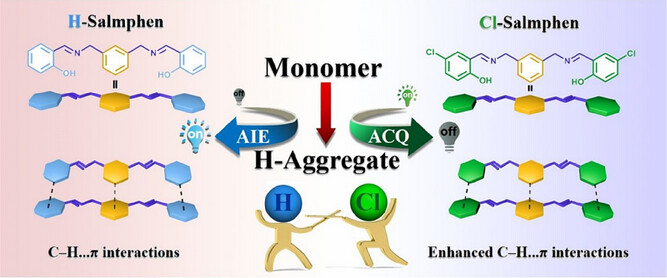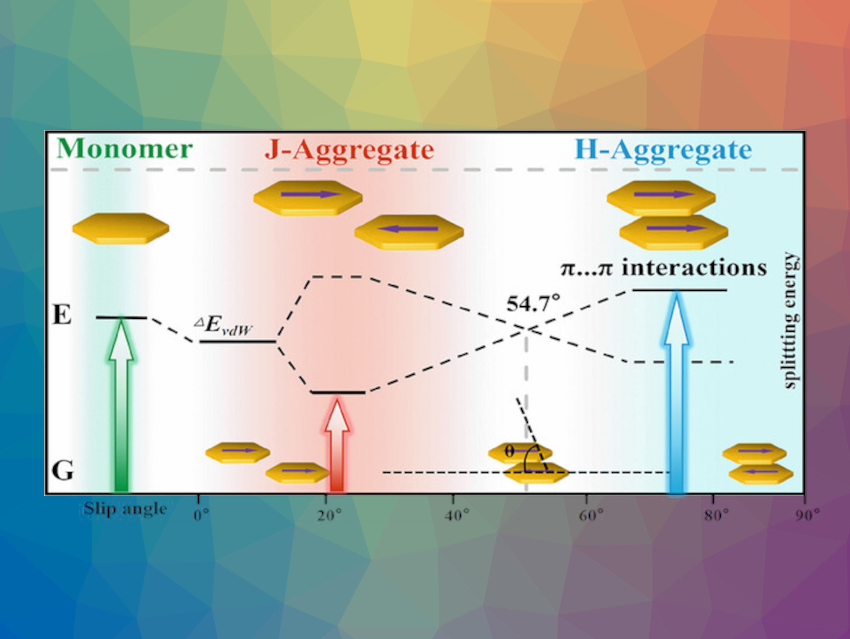Solid-state organic luminescent materials form molecular aggregates assembled through intermolecular interactions. The molecular stacking can influence the photophysical properties. In certain aggregates, the transition dipole moment adopts a parallel, stacked mode (H-aggregates). π-π interactions are usually the primary feature of H-aggregates. In other aggregates, referred to as J-aggregates, the system adopts a mode in which the transition dipoles are parallel and offset.
There is a scarcity of single-crystal examples of H-aggregation. This limits the understanding of the relationship between their stacking patterns and optical behaviors. In addition, the quenching effect on fluorescence caused by strong intermolecular coupling in H-aggregates has constrained their practical applications.
Qiong Wu, Kunming University, China, and colleagues have synthesized two polyaromatic Schiff base analogues, one non-halogenated (H-Salmphen) and one halogenated (Cl-Salmphen, pictured below). Using single-crystal structural analysis, the team found that there were no effective π-π interactions present in the stacking structures of the two resulting H-aggregates. Instead, neighboring molecules are primarily connected through C-H···π interactions. Interestingly, although the introduction of halogen atoms did not change the stacking pattern of the molecules, a complete change in the fluorescence behavior from aggregation-induced emission (AIE) to aggregation-caused quenching (ACQ) was observed. According to the researchers, theoretical calculations suggest that this transformation is associated with the enhancement of intermolecular interactions caused by the introduction of the halogen atoms.

Typically, changes in the water content of organic solvents lead to changes in the aggregation state of Schiff base derivatives. The team used this effect for analytical purposes: They built an efficient fluorescence paper sensor based on Cl-Salmphen for real-time water content detection using a smartphone for imaging. In this application, Cl-Salmphen provides a high signal-to-noise ratio and linear responses across a wide range of water contents.
- C─H···π interaction induced H‐aggregates for wide range water content detection in organic solvents,
Jiajun Xu, Meifen Huang, Haijun Pang, Zhehui Weng, Guangzhi Hu, Siman Zhang, Qiuling Yang, Qiong Wu,
Aggregate 2024.
https://doi.org/10.1002/agt2.546




